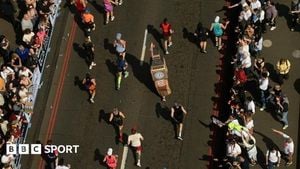Since its release in 1982, the first installment of the ‘Rambo’ saga has generated a lot of buzz. Apart from its value as an action movie, in which Sylvester Stallone shines, it also criticizes the cold reception that many American soldiers received after returning from Vietnam. In the film, John Rambo, a war veteran, is harassed by the police in a small town and forced to use his combat and survival skills to escape the authorities.
Most surprisingly, according to a retired U.S. Delta Force operative, the tactics that the character employs are realistic and not far from what a soldier with Rambo’s training would do. Bob Keller, a former U.S. Special Forces and Delta Force member, recently reviewed ‘First Blood’ in a video uploaded by the YouTube channel Insider titled “Army Special Ops Rates 10 Delta Force And Special Forces Scenes In Movies.” His critique begins at around the 12:40 mark.
Keller gave the movie a score of 9.5 out of 10, stating, “It’s almost a full 10.” He elaborated on the realism of Rambo’s tactics, saying, “Rambo First Blood is going off of a, like he’s an SF guy from Vietnam. All this stuff would be 100% legit. Like as an SF guy, being in the woods, like you’ll be trained on booby traps, and all these tactics.” He noted that while most Special Ops personnel might receive limited training in such tactics, Rambo’s extensive experience from his time in Vietnam made him exceptionally adept.
In ‘First Blood,’ John Rambo, played by Stallone, is a decorated Vietnam veteran who has returned to the United States. After visiting the family of a deceased comrade, he travels on foot through the small town of Hope, Washington. The local sheriff, Will Teasle, portrayed by Brian Dennehy, mistakes Rambo for a vagrant and disdainfully dismisses him. Ignoring the cop’s veiled threats, Rambo returns to town, where Teasle arrests him. While locked up, Rambo is tortured by other police officers, which stirs up traumatic memories of his captivity in Vietnam. He uses his combat skills to escape into the local woods, leading to a dangerous game of cat and mouse.
Rambo just wants to be left alone, but the authorities are obsessed with capturing him at all costs. Keller’s analysis reinforces the film’s verisimilitude and invites a fresh look: the depicted fiction is not as far from reality as it seems. More than four decades after its theatrical release, ‘First Blood’ continues to generate both criticism and admiration, particularly among those with military training and skills similar to Rambo’s.
The film was directed by Ted Kotcheff and is based on the novel ‘First Blood’ by David Morrell. It was filmed in various locations across British Columbia, Canada, which provided the stunning backdrop for Rambo's harrowing journey. The natural landscapes not only serve as the setting for the action but also as a metaphor for Rambo's inner turmoil.
Hope, British Columbia, was used to represent the town where Rambo arrives. The sheriff Teasle’s perception of Rambo as a threat leads to a violent confrontation that escalates into a full-blown police manhunt. The film’s critical portrayal of the treatment of Vietnam veterans resonates deeply, showcasing Rambo as a tragic figure caught between his past and the present.
In the film, Rambo suffers from PTSD, a condition that was not widely understood when the movie was released. His violent arrest and subsequent escape into the wilderness highlight the struggles of veterans returning home to a society that often misunderstands their experiences. Keller's review emphasizes that while the scenes may appear exaggerated, the core elements of Rambo's character and his actions are grounded in reality.
The Othello Tunnels, a series of old railway tunnels, are featured prominently in a scene where Sheriff Teasle's car overturns. The dramatic landscapes of British Columbia, including the Fraser Valley and Garibaldi Provincial Park, were meticulously chosen to enhance the film's intensity. The mountainous terrain and dense forests create an atmosphere that reflects Rambo's isolation and conflict.
As the story unfolds, Rambo's violent encounters with the police escalate, leading to a series of guerrilla tactics that showcase his skills. Keller noted, “Most Special Ops guys getting out of the military do continue to do that in other organizations. Or they do it, you know, create their own business doing it.” This insight into the mindset of veterans adds depth to the character of Rambo, illustrating how military training often shapes their lives long after service.
Rambo's encounter with Colonel Samuel Trautman, his former commander, serves as a pivotal moment in the film. Trautman attempts to reason with the authorities, explaining Rambo's expertise in guerrilla warfare and urging them to reconsider their approach. The tension between Rambo and the police escalates, culminating in a dramatic showdown that leaves viewers questioning the morality of the actions taken by both sides.
The film’s conclusion is both powerful and poignant, as Rambo ultimately surrenders to Trautman, overwhelmed by the trauma of his past and the futility of his struggle. This emotional climax resonates with audiences, inviting reflection on the broader implications of war and its aftermath.
Despite its action-packed sequences, ‘First Blood’ remains a thought-provoking exploration of the psychological effects of war on soldiers. The film’s legacy endures, inspiring discussions about the treatment of veterans and the societal perceptions of military personnel. As Keller's review illustrates, the film's realism and emotional depth continue to captivate audiences, making it a timeless classic.
As ‘First Blood’ continues to be celebrated in various media, including its recent airing on Italia 1, it serves as a reminder of the sacrifices made by veterans and the ongoing challenges they face. The film’s impact is undeniable, solidifying its place in cinematic history and ensuring that the story of John Rambo remains relevant for generations to come.





